Chapter 6: Lavatories and Sinks
This guide explains requirements in the ADA Standards for lavatories and sinks.
Notational tips for users of screen reading software follow. In this document ″ indicates inches and ′ indicates feet. Some images are paired with visually hidden notes. These annotations are prefaced with begin and end image notes.

Required Compliance
The Standards cover access to sink and to lavatories, which are sinks used for handwashing in toilet and bathing facilities. At least one lavatory, where provided, must comply in each accessible toilet or bathing room and be located outside a toilet compartment.
Where sinks are provided in accessible rooms or spaces, at least 5%, but no less than one, of each type must comply. This provision applies to sinks in breakrooms, kitchens and kitchenettes, classrooms, and other spaces required to be accessible. Mop or service sinks, which are intended to be used for janitorial or maintenance purposes, are exempt. Other types of sinks used only by employees to perform work are not required to comply (§203.9), although compliance is advisable.

Lavatories
[§606]
Specifications for lavatories address clear floor space for a forward approach, height, faucets, and exposed pipes and surfaces. The Standards also address mirrors, where provided.

Sinks
[§606]
Sinks are subject to the same criteria as lavatories, but some sinks are permitted a parallel approach instead of a forward approach. In kitchens, kitchenettes, and breakrooms without a cooktop or conventional range, a parallel approach is permitted at kitchen sinks (§606.2, Ex. 1). A parallel approach is also permitted at wet bars (i.e., bars or counters that have sinks with running water and are used for mixing drinks). Where multi-bowl sinks are provided, only one bowl must comply with knee and toe space clearance (§606.2, Ex. 7).
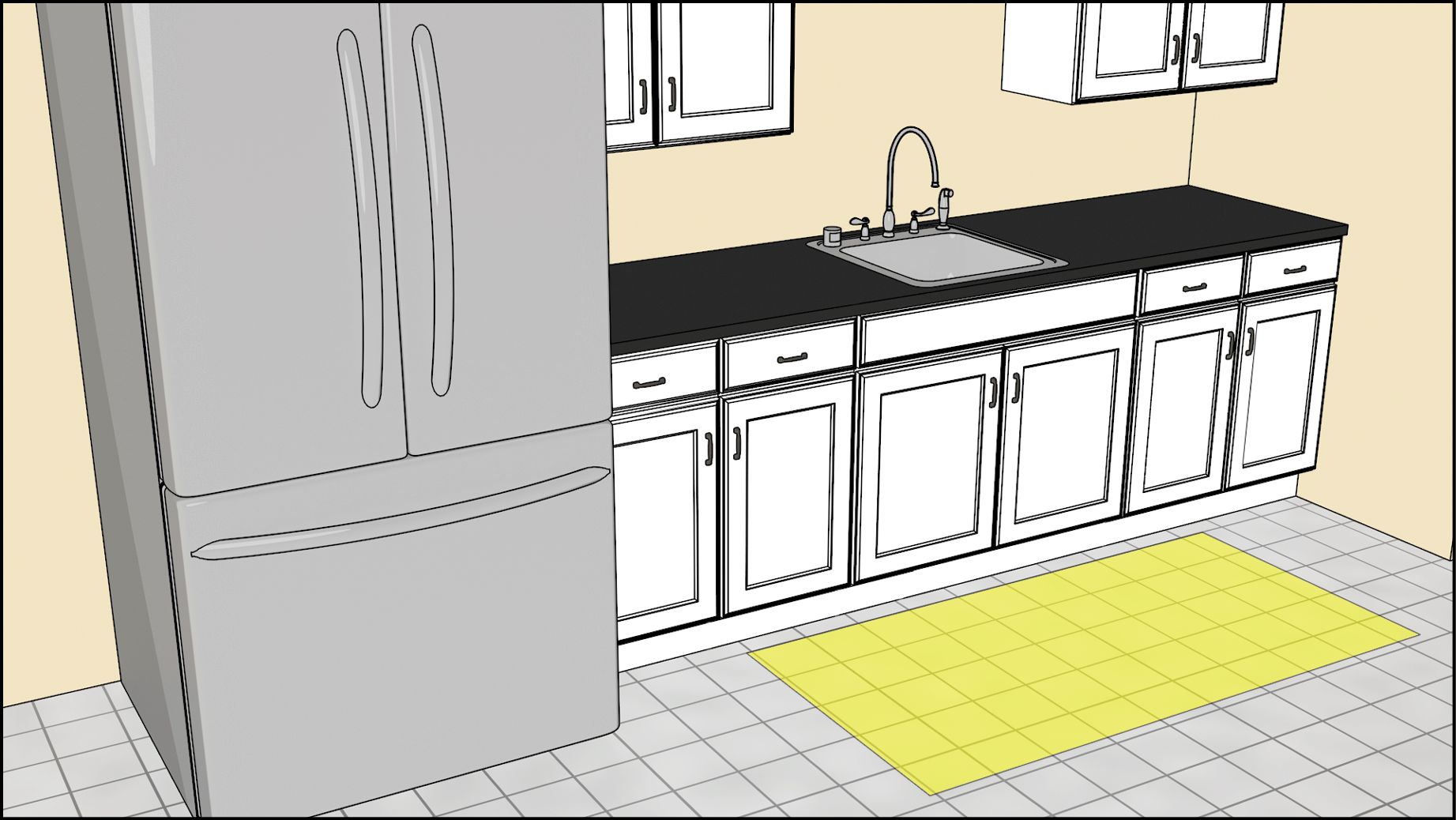
Lavatories and Sinks in Residential Dwelling Units
In mobility accessible dwelling units, lavatories and sinks must comply. Additional exceptions are permitted for fixtures in these facilities.
Exceptions for Lavatories and Sinks in Residential Dwelling Units
Lavatory knee and toe space
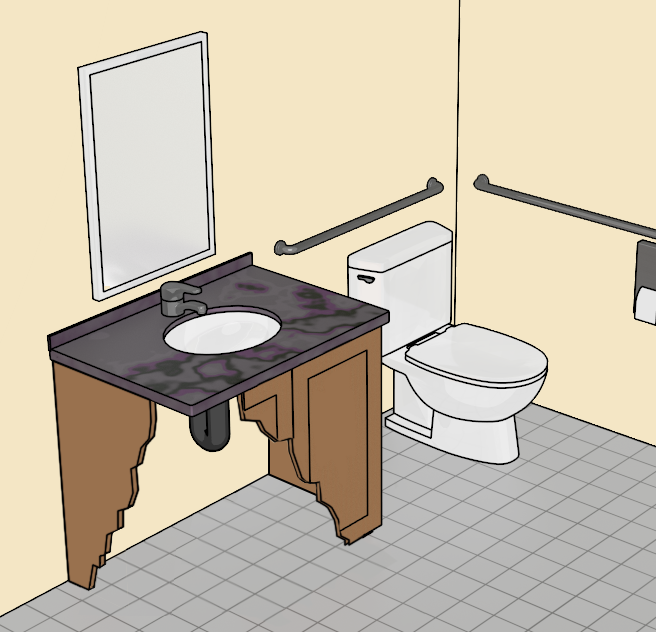
Kitchen sinks that are adjustable to 29″ minimum and 36″ maximum height are allowed if rough-in plumbing permits connections of supply and drainage pipes for sinks mounted at 29″ high (§606.3, Ex. 2).

Lavatories and Sinks for Children’s Use
Specifications based on children’s dimensions may be followed when lavatories or sinks are designed primarily for use by children ages 12 and younger. Structured as exceptions, these provisions are optional and serve as alternatives to adult-based dimensions. The Standards do not require building elements, including lavatories and sinks, to be designed or constructed for use primarily by children. This determination is left to other building requirements or regulations, good practice, client preference, or other factors. Exceptions are provided based on two age groups: children 6 to 12 years and children 5 years and younger.
A parallel approach is permitted to lavatories or sinks used primarily by children 5 and younger (§606.2, Ex. 5). For this age group, the standard fixture height is too low to accommodate a forward approach.
Sink for Children Ages 5 and Younger
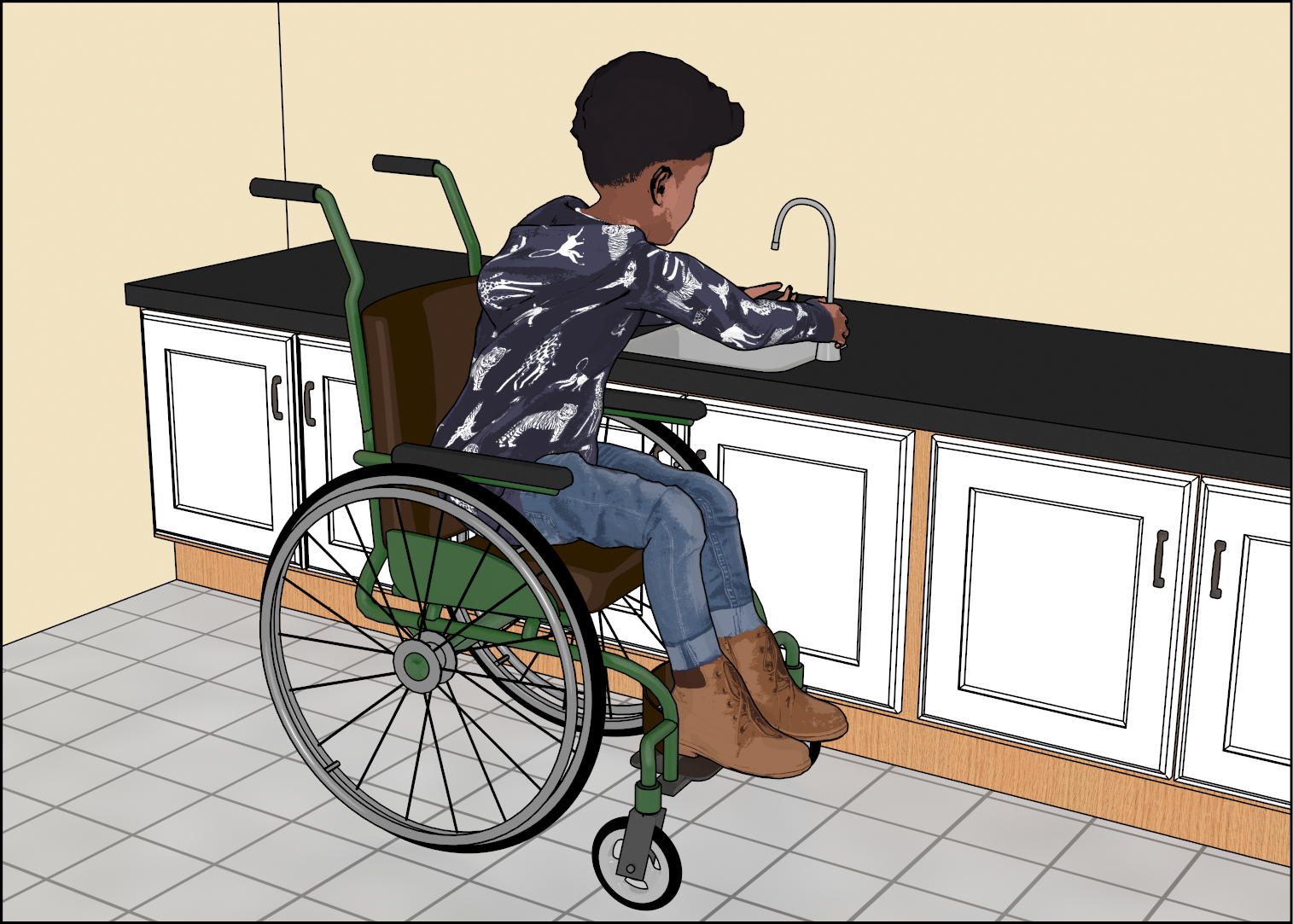
A forward approach is required at lavatories and sinks primarily used by children 6 through 12. However, a lower knee clearance (24″ minimum) is permitted if the rim or counter surface is no higher than 31″ above the finish floor or ground (§606.2, Ex. 4).
Clear Floor or Ground Space
Clear floor space at lavatories and most sinks must provide a forward approach and include knee and toe space clearance. It is advisable, but not required, that the clear floor space be centered under the fixture. The knee and toe space must underlie the bowl, faucet controls, and other operable parts of the fixture and must be 17″ to 25″ deep. If the clear floor space is obstructed on both sides for more than half the depth, such as with alcoves, additional clearance is required for maneuvering.
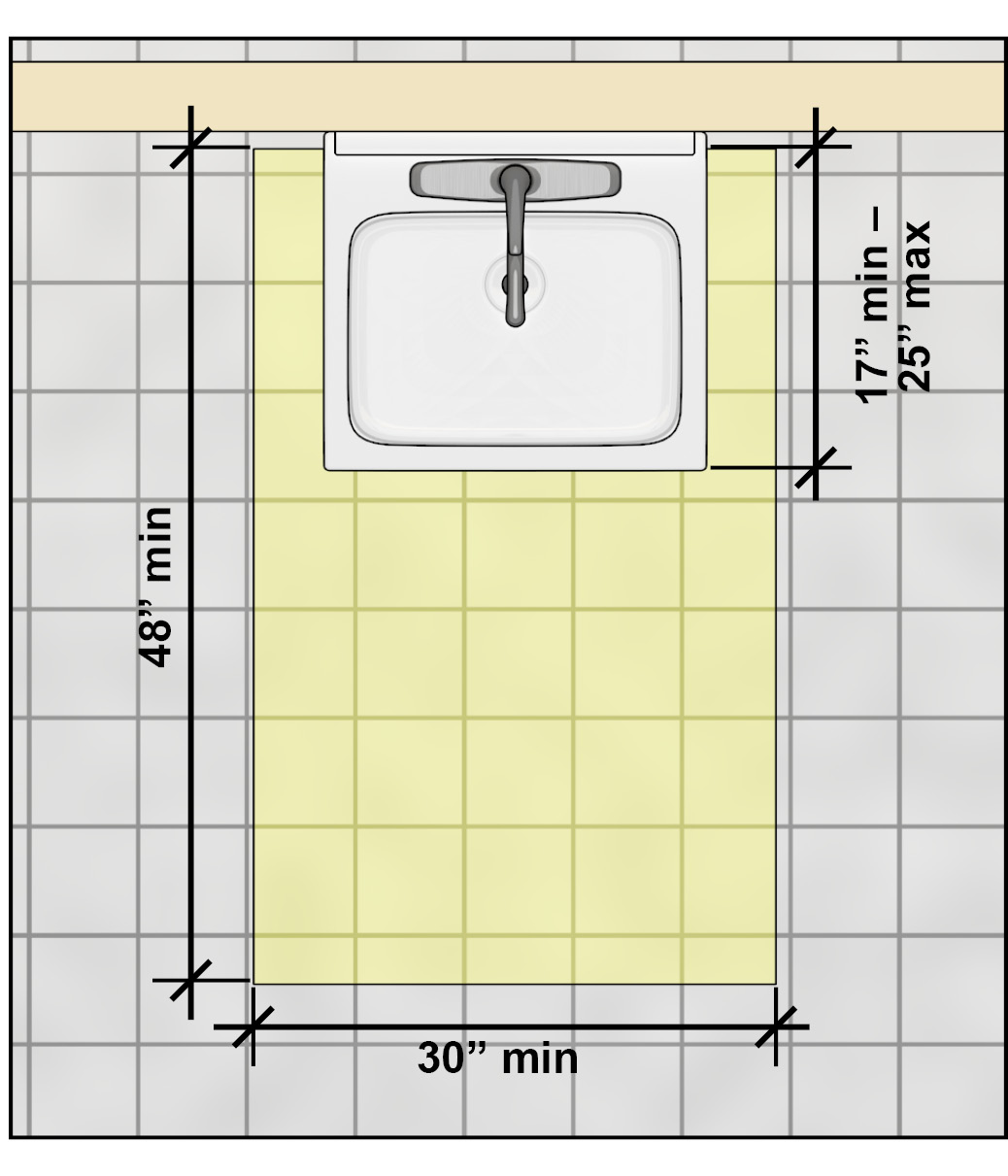

No element, including towel dispensers, hand dryers, etc., can overlap the clear floor space outside the designated knee and toe space.
Knee and Toe Clearances
Knee and toe space must be at least 30″ wide and 17″ to 25″ deep from the leading edge of the clear floor space. These specified clearances allow space for plumbing, enclosures, and supports outside the minimum clearances. No object may protrude into the required clearances other than the dip of the overflow.


Beyond a depth of 8″ measured from the leading edge, the 27″ minimum high knee clearance can reduce 18″ to a height of 9″ minimum (toe space) over a 3″ span (6:1 slope). When the knee and toe is deeper than 17″, the additional depth must provide full knee clearance at least 27″ high.


Knee and Toe Space and Reach Depth
The knee and toe space must be as deep as the required reach to faucet controls, soap dispensers, and other operable parts. This requirement is necessary because the forward reach for most people typically does not extend beyond the toes. Open space beyond the required toe clearance is permitted.

To avoid issues with garbage disposals protruding into knee and toe space, use a sink with a drain located at the rear of the bowl instead of the center. At sinks with two bowls, knee and toe space is required beneath only one bowl (§606.2, Ex. 7).
Reach at a Lavatory
The maximum reach of 48″ is reduced to 44″ when the depth of the forward reach over an obstruction exceeds 20″.


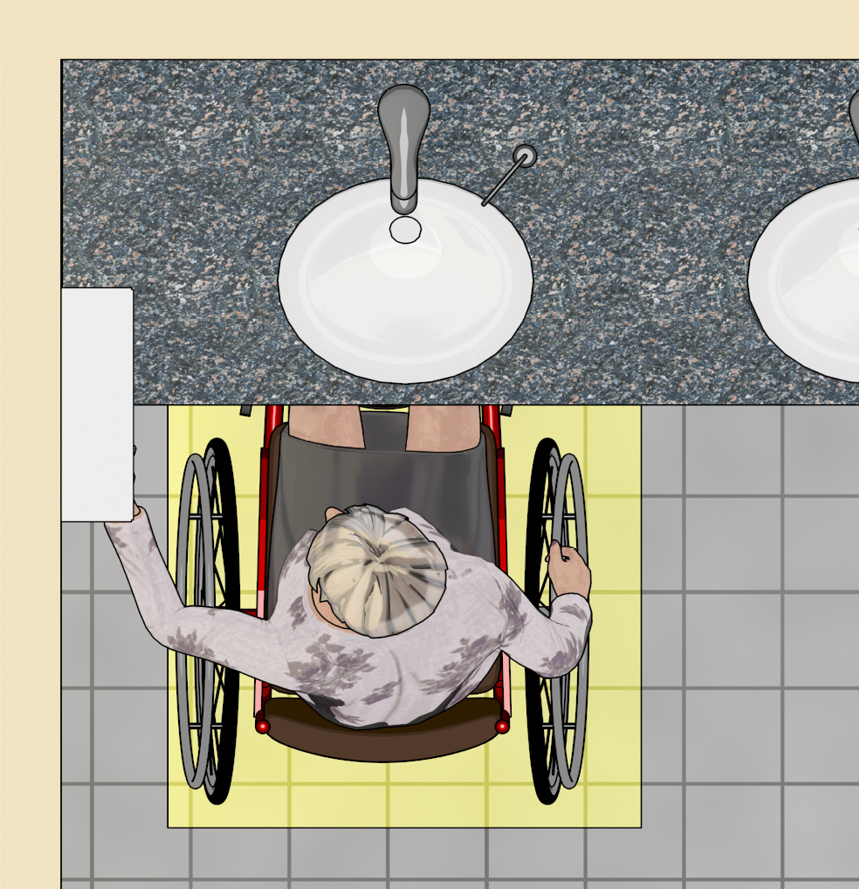
Faucets and Operable Parts
Faucet controls, soap dispensers, and other elements that require manual operation must be usable with one hand and not require tight grasping, pinching, or twisting of the wrist, or more than five pounds of force (lbf) to operate. Metering faucets with manual or touch controls must remain open for at least 10 seconds.
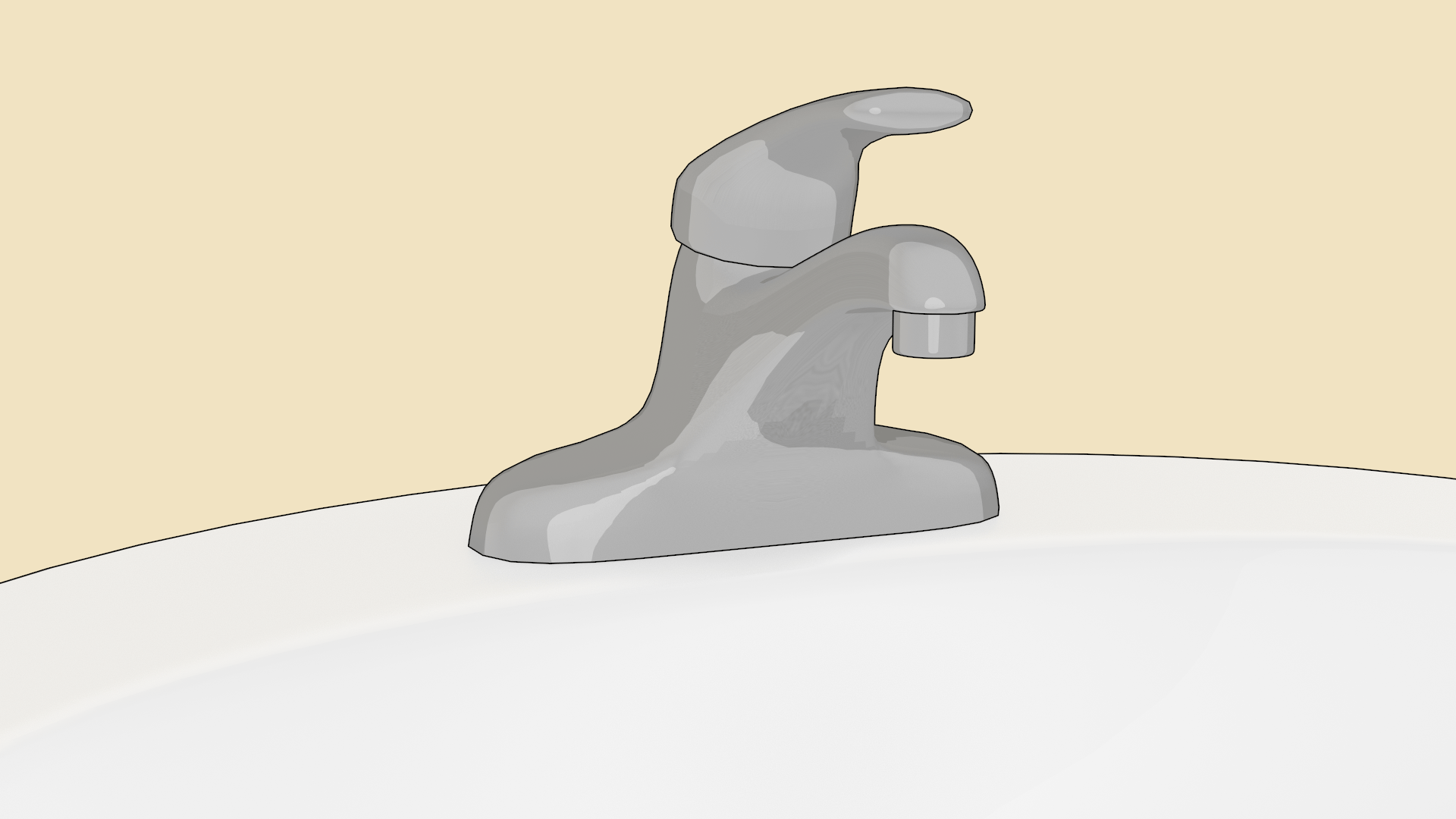
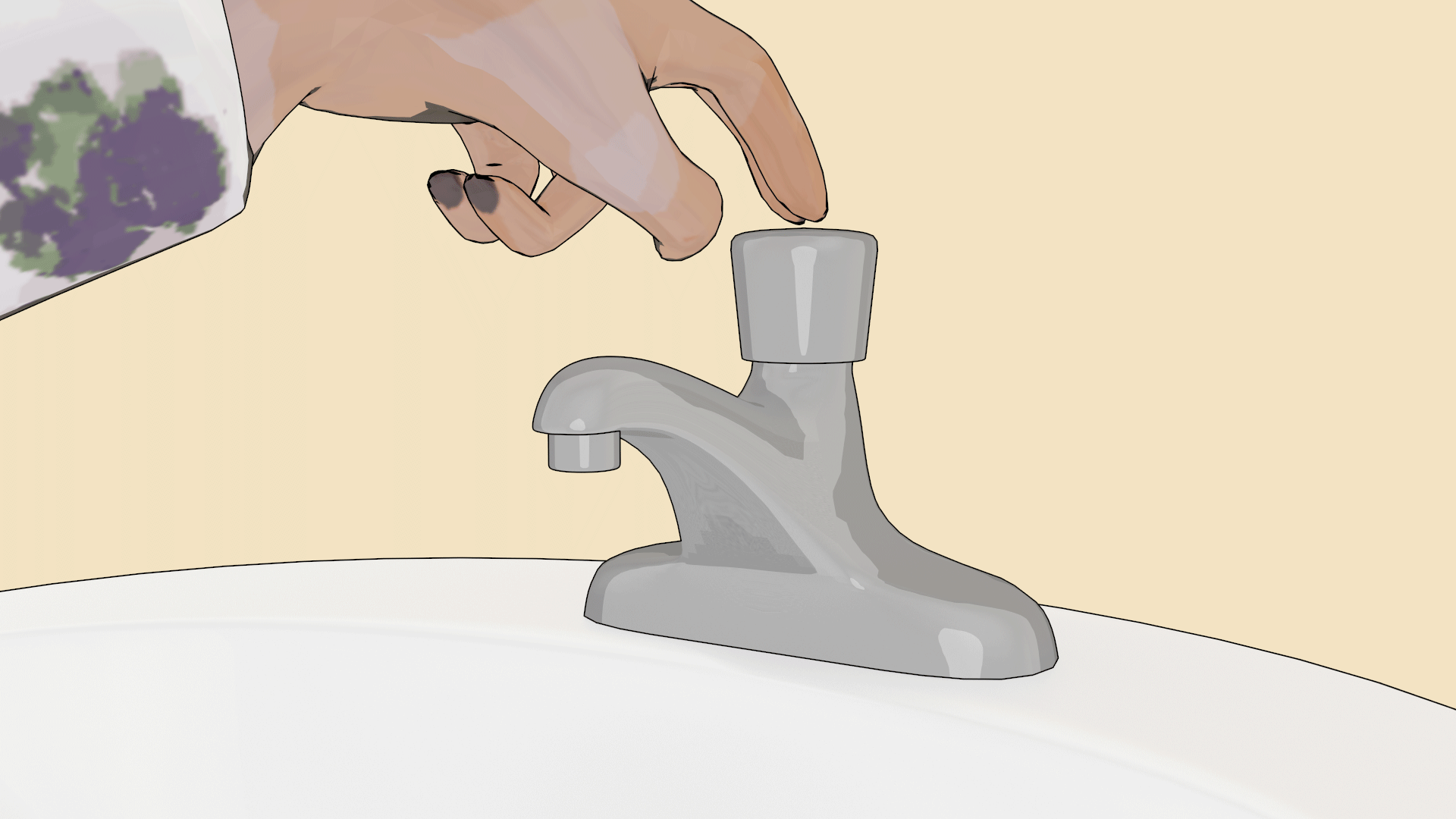
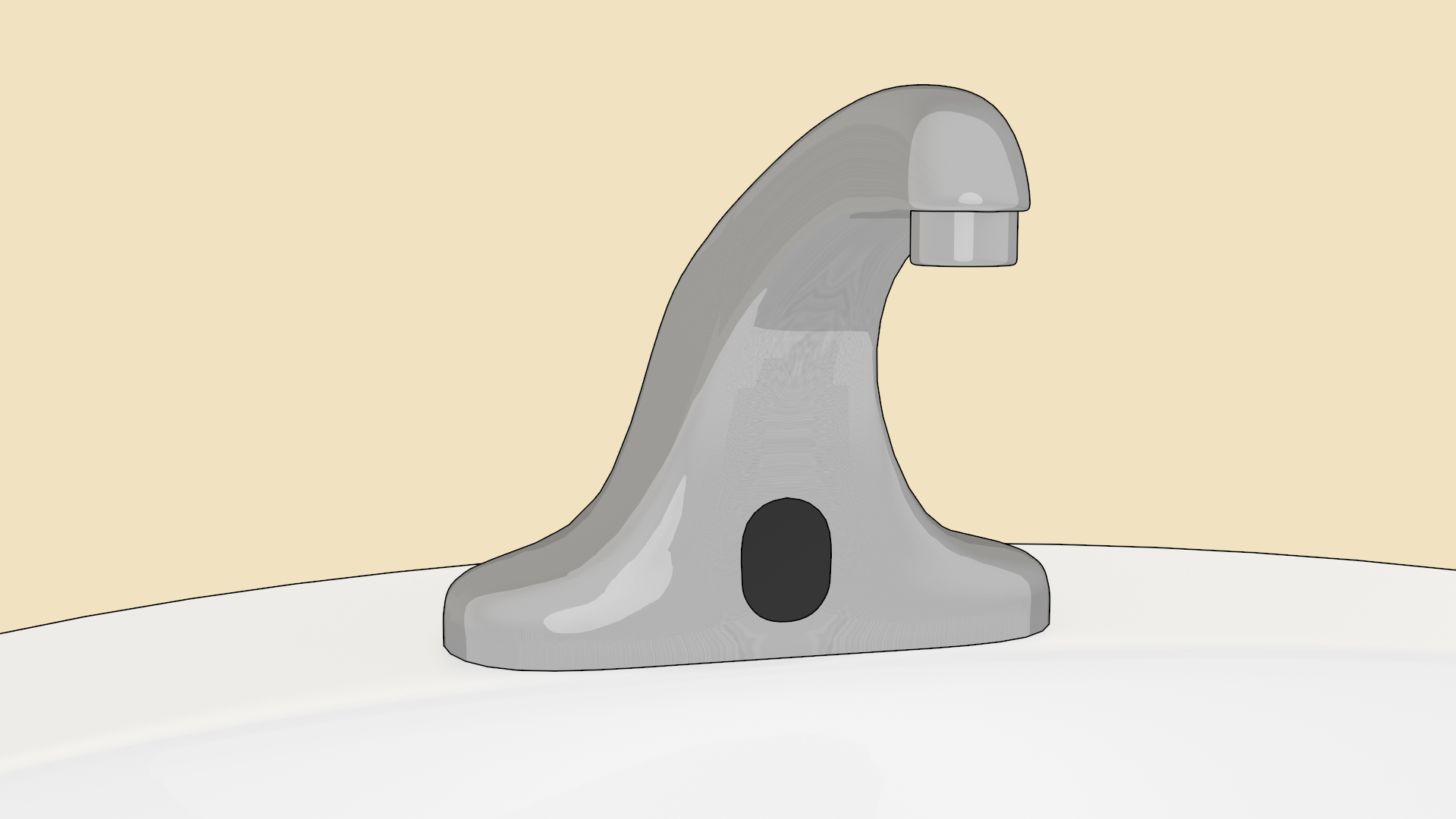
Motion-activated or touch-free faucets and dispensers provide easier access and accommodate a broader range of users. This type of control does not have to remain active for a minimum amount of time.
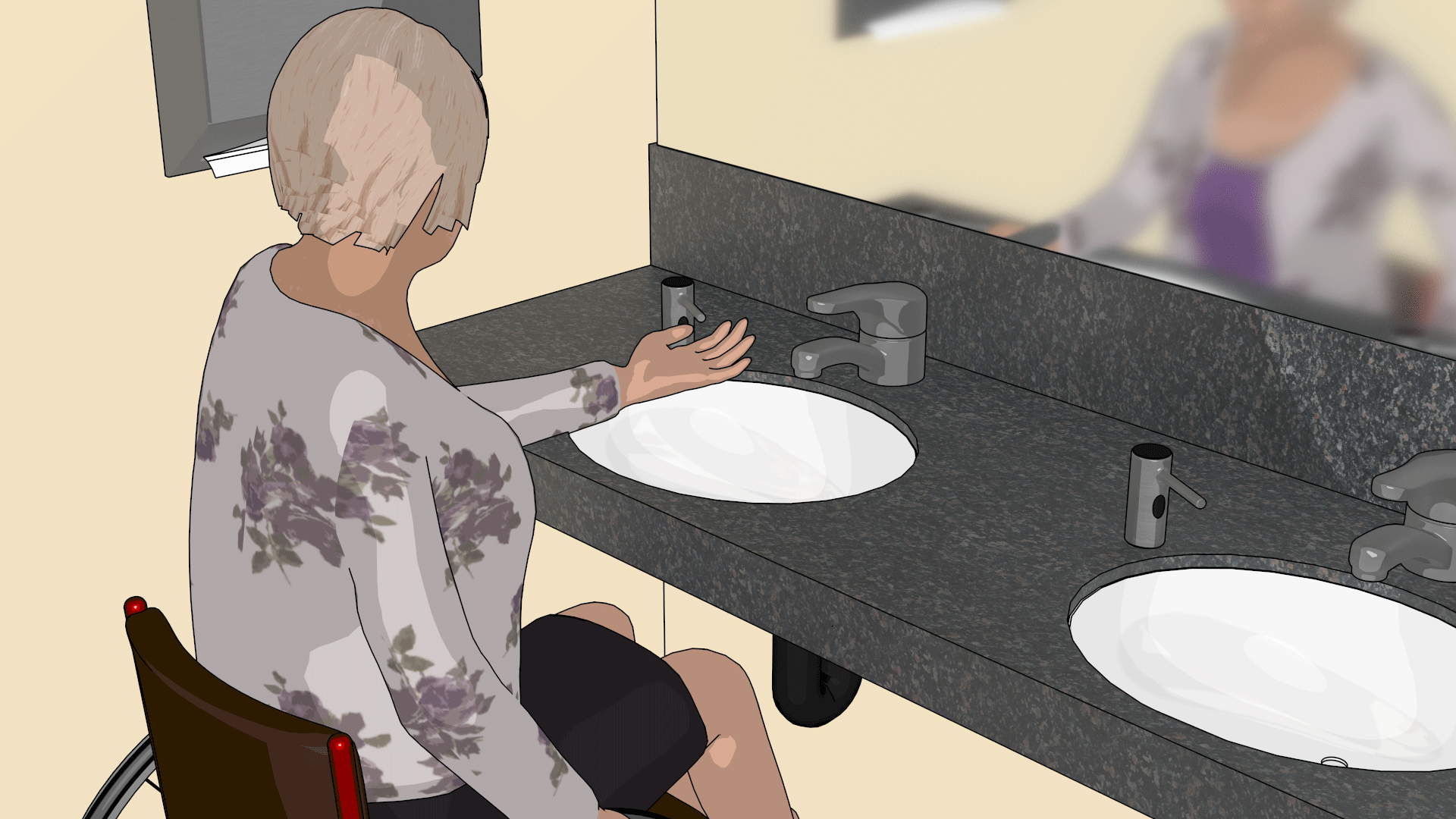
Exposed Pipes and Surfaces
[§606.5]
To avoid injury or burns, water supply and drainage pipes under lavatories and sinks must be insulated, enclosed, or configured to prevent contact. There cannot be sharp or abrasive surfaces under lavatories and sinks. Enclosure of pipes and surfaces must comply with knee and toe space clearance.

Common Questions
What type of sinks are exempt as “service sinks”?
As used in the Standards, the term “service sinks” is similar in meaning as “mop sinks” and refers to sinks used for janitorial or maintenance purposes.
Are work use sinks required to comply?
Sinks and other elements used only by employees for work are not required to comply (§203.9). Examples include sinks in restaurant kitchens and in laboratories not used for instruction. Providing access to work use sinks is advisable. Sinks in public and common use spaces not used solely by employees for work, including classrooms and laboratories used for instruction, must comply. Where multiple sinks are provided, at least 5%, but no less than one, of each type must comply (§212.3).
Are laundry room sinks required to comply?
Sinks in laundry facilities not used solely by employees for work, such as those provided for use by residents or guests in residential facilities, dormitories, and other transient lodging, must comply. Those located in commercial laundry facilities and used only by employees, as well as mop or service sinks located in laundry rooms, are not required to comply.
Must the clear floor space at lavatories and sinks be centered?
No. It is advisable, though not required, that the clear floor space be nominally centered on the fixture. However, the clear floor space must fully underlie the fixture.
When must sinks or lavatories be designed for use by children?
The Standards do not specify where sinks or lavatories must be designed specifically for children. This determination is usually made based on other building codes or regulations, good practice, client preference, or other factors. Instead, the Standards provide exceptions that can be used when the decision is made to design fixtures for use primarily by children ages 12 and younger.
Can pipes, garbage disposals, or other elements protrude into the knee or toe clearance?
No. Only the dip of the overflow is permitted within the required knee and toe clearance.
Does space beyond the 6″ maximum toe space need to be enclosed?
No, it does not need to be enclosed. Open space beyond the 6″ maximum toe space is permitted.
How can garbage disposals be accommodated at sinks?
One option is to select a sink with a drain located at the rear of the bowl instead of the center. Another option is a two-bowl sink where knee and toe space is provided below only one bowl.
Is the exception permitting a side approach to certain kitchen sinks applicable only to those located in kitchens?
The exception applies to kitchen sinks (i.e., used for food preparation or cooking) located in break rooms, kitchenettes and kitchens, party rooms, and similar spaces if they do not contain a cooktop or range. Other types of cooking appliances, including microwave ovens, do not impact application of this exception.
Can a lavatory be located outside of a toilet room?
Yes. The Standards do not prohibit location of lavatories outside toilet rooms where permitted by codes and other regulations.
Can a lavatory be provided in a wheelchair accessible toilet compartment?
Yes. However, the toilet compartment must meet requirements for toilet rooms, including turning space (§604.8). A second accessible lavatory must be provided outside the compartment (§213.3.4).
Are touch-free (motion sensor) faucets required to remain open for at least 10 seconds?
No. Manually operated faucet controls that are metered and activate for a set period of time must remain open for at least 10 seconds. Motion-activated faucet controls are not required to remain open for a minimum duration.
Can accessible mirrors be located above lavatories?
Yes. Accessible mirrors can be located above lavatories or countertops if the bottom of the reflecting surface is 40″ maximum above the finish floor (§603.3). The bottom of the reflecting surface of mirrors not located above lavatories or countertops must be 35″ maximum above the finish floor.
If a toilet room has a full-length mirror and a mirror above a countertop or lavatory, must both types comply?
No. The Standards require only one mirror in a toilet room to comply. If mirrors are provided above lavatories or counters and at other locations in a toilet room, it is advisable, but not required, that one of each type comply.
Are lavatories and sinks provided at outdoor locations required to comply with the Standards?
Yes. At both indoor or outdoor locations, lavatories and sinks that serve accessible facilities or spaces, including, but not limited to, fishing piers, recreational boating facilities, and picnic and camping facilities, must comply.
Are eyewash stations required to be accessible?
Yes. Eye wash stations must comply as operable parts (§309), including requirements for clear floor space and controls that are within accessible reach range and operable without tight grasping, pinching, twisting of the wrist, or more than 5lbf. Products that are usable while standing and from seated positions, including forward approach access at those with basins or bowls, are recommended for greater usability.
September 2021




